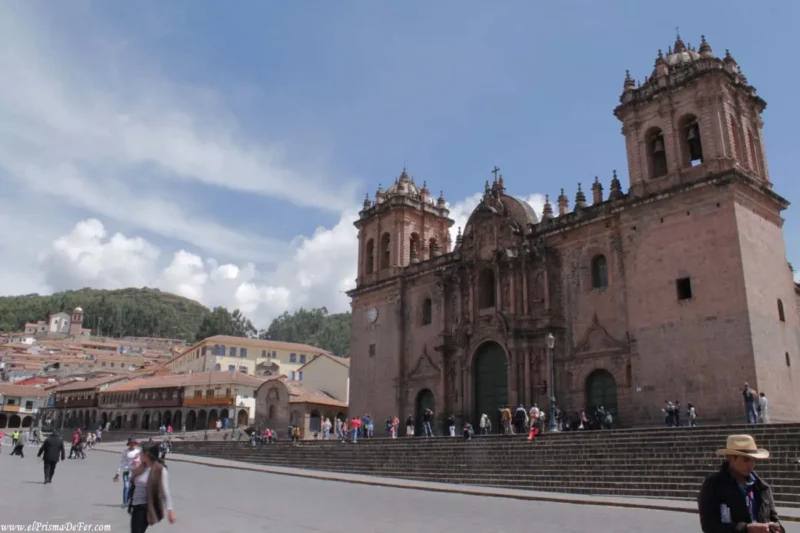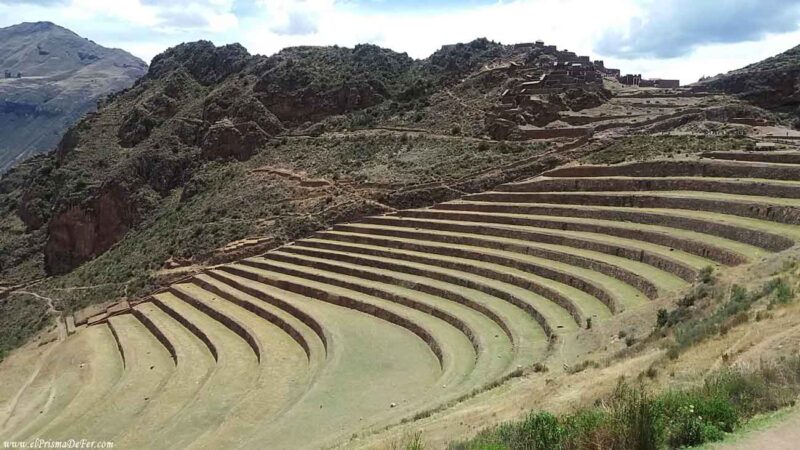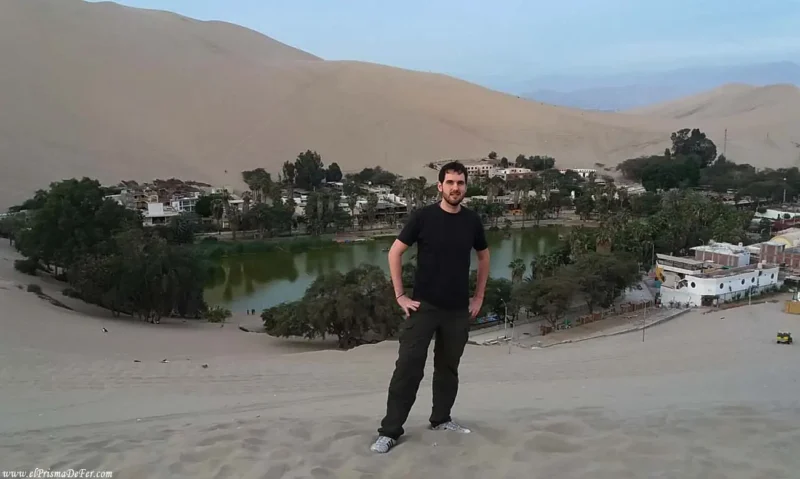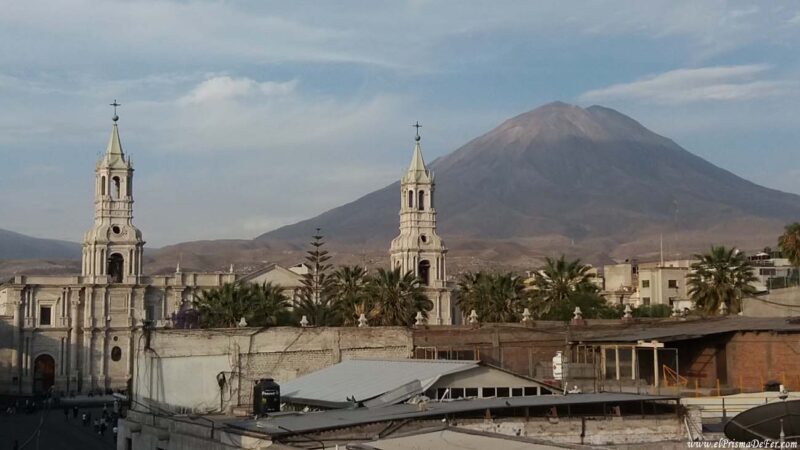Traveling to Lima was a unique experience during my trip to Peru. To be honest, Lima wasn't a great city for me: I found it to be a large, chaotic place with a climate that isn't always conducive to enjoying it.
However, at the same time, it has places worth exploring, such as its historic center, some coastal neighborhoods, and, above all, its renowned cuisine.
In this post, I'm going to tell you about my experience, what I did in Lima, and what I think is worth keeping in mind if you're thinking of visiting.


Table of Contents
My impressions of Lima
Lima was a city that didn't quite resonate with me. Beyond the richness of its colonial historic center, with buildings clearly worth a visit, and Miraflores, which with its ocean cliffs and beaches is undoubtedly the capital's most attractive feature, I found the rest of the city chaotic, dirty, and unsafe in several areas off the tourist trail.
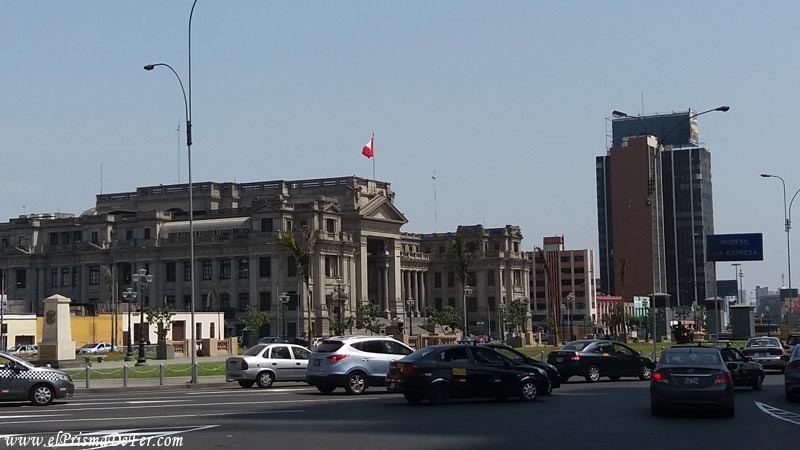
While it's true that Lima boasts some of the best cuisine in the country and has neighborhoods that are enjoyable to walk around, overall it wasn't a destination that left me wanting to stay longer.
Between the constant traffic, the almost always gray sky, and the feeling of having to be aware of your surroundings, my time in the city ended up being more about transit than enjoyment.
I often hear travelers say, "I loved that city," when in reality, they enjoyed a particular neighborhood. In the case of Lima, for example, Miraflores seemed like a beautiful neighborhood to me. But I also felt like it was like an isolated bubble within another city, very different from what you experience in other areas.
For me, a city isn't defined by just a pretty neighborhood: I evaluate it as a whole, considering aspects like transportation, cleanliness, safety, architecture, and the overall vibe it conveys. And in that sense, Lima didn't quite convince me.
On the other hand, the impression Cusco and the Sacred Valley left on me was very different. These places truly captivated me with their history, their landscapes, their Andean culture, and the closeness of the communities that still preserve ancient traditions. Without a doubt, I found the places I liked most in all of Peru there.
How to get around Lima
Getting around Lima can be a challenge, as traffic is chaotic and the public transportation infrastructure is not fully developed. However, there are several alternatives worth considering:
Taxis and transportation apps
The most practical and safest way for tourists is to use apps like Uber, Cabify, or DiDi, which work well in the city and allow you to know the price of the ride in advance. Another popular option is Yango, which usually has competitive rates. Informal taxis are plentiful, but they are not recommended if you are unfamiliar with the city, as they don't have meters and the price always has to be negotiated.
Public transport
Public transportation in Lima is dominated by minibuses and buses that travel throughout the city, but they can be confusing for a visitor.
The clearest option is the Metropolitano, a rapid bus system that has exclusive lanes and connects important points such as downtown Lima with Miraflores and Barranco. To use it, you need a rechargeable card.
Walking and cycling
In neighborhoods like Miraflores and Barranco, it's best to get around on foot. They're safe and short, perfect for exploring on foot.
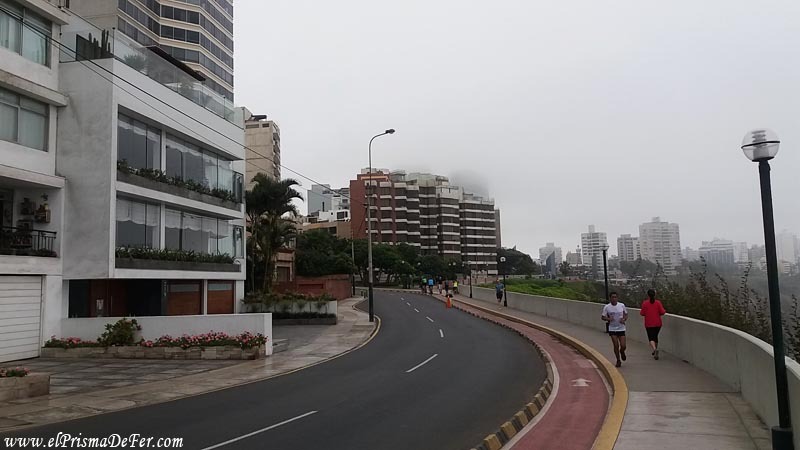
There are also bicycle and electric scooter rental services that allow you to comfortably move along the boardwalk and enjoy the ocean views.
Private tours and transfers
If you want to visit places outside the city or prefer to avoid Lima's traffic, another option is to book an organized tour or private transfers, which are especially practical for getting to the airport or for trips to Paracas or Huacachina.

Map with the main attractions to see in Lima
What to do in Lima
Walking Tour
A free walking tour in Lima is the best way to start getting to know the city. While it's not free, as it works based on tips, it helps you get your bearings quickly, you learn history and anecdotes from a local guide and, in the process, you can meet other travelers. You can book your free walking tour here.
Tour the Historic Center
Lima's historic center is a World Heritage Site and the place where the city's colonial heritage can best be appreciated.
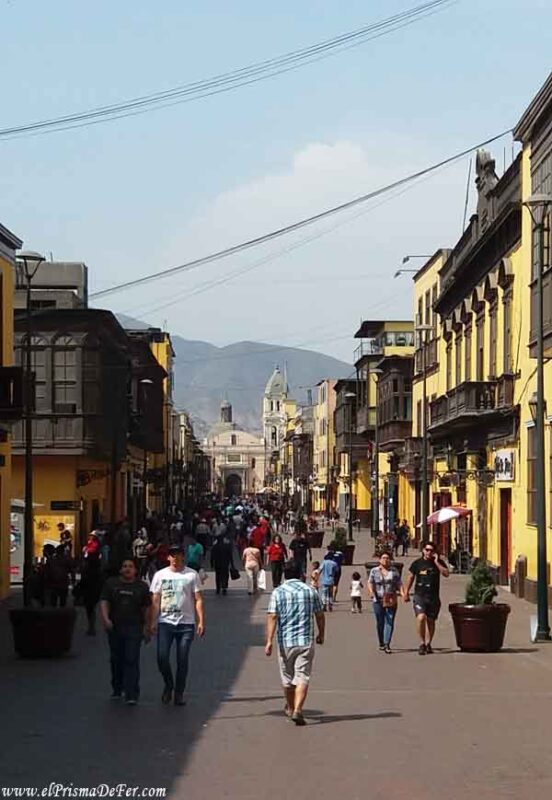
Its streets are lined with churches, convents, and Baroque-style buildings reminiscent of the viceregal past. The Plaza Mayor is the ideal starting point, surrounded by the Cathedral, the Government Palace, and the Municipal Palace.
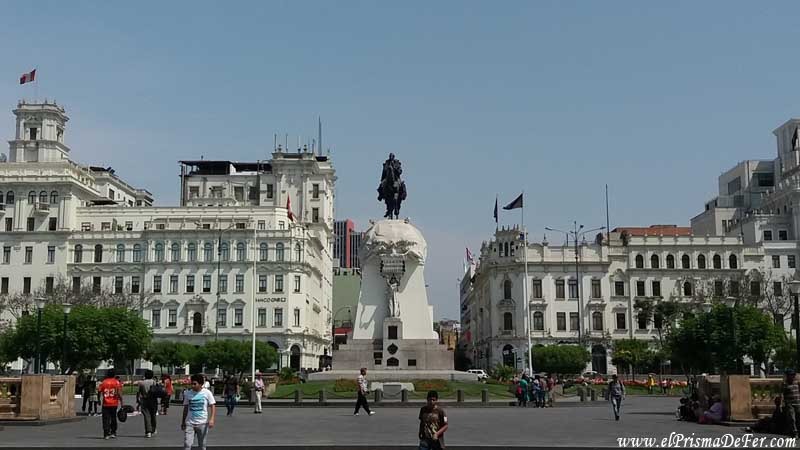
In addition to the square, it's worth visiting the Convent of San Francisco, famous for its catacombs and ancient library.
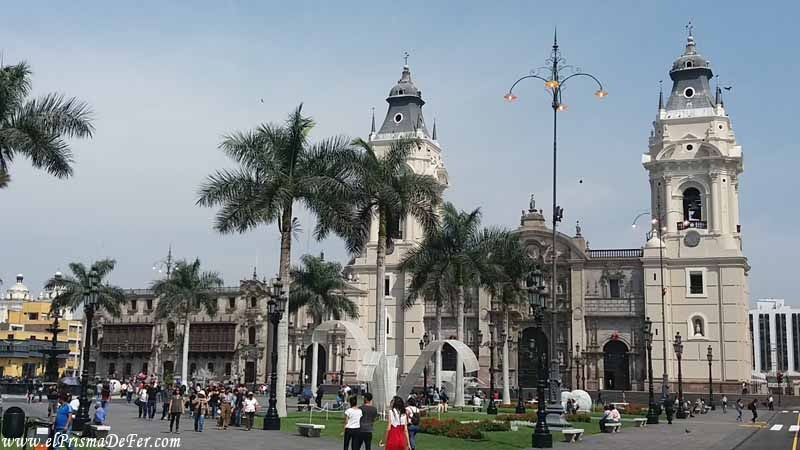
It is one of the places that justify spending at least half a day in the historic area.
Walk through Miraflores and its Malecón
Miraflores is undoubtedly Lima's most pleasant area for walking. The Malecón stretches along the cliffs overlooking the Pacific Ocean and offers spectacular views of the sea, especially at sunset.
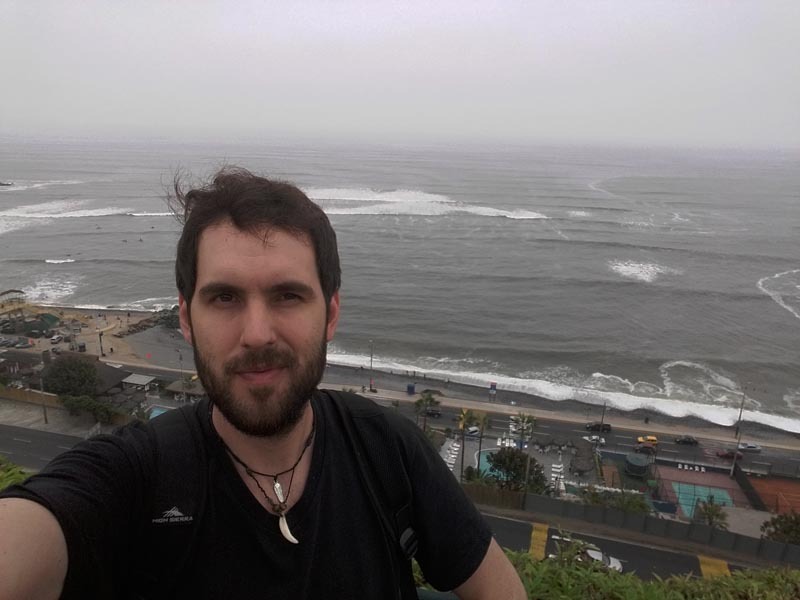
It's a peaceful walk, with well-kept parks like the Parque del Amor, which has become an icon for its central sculpture and mosaic murals.
Although Lima's beaches aren't the most attractive in the country, the contrast between the cliffs and the sea is very photogenic.
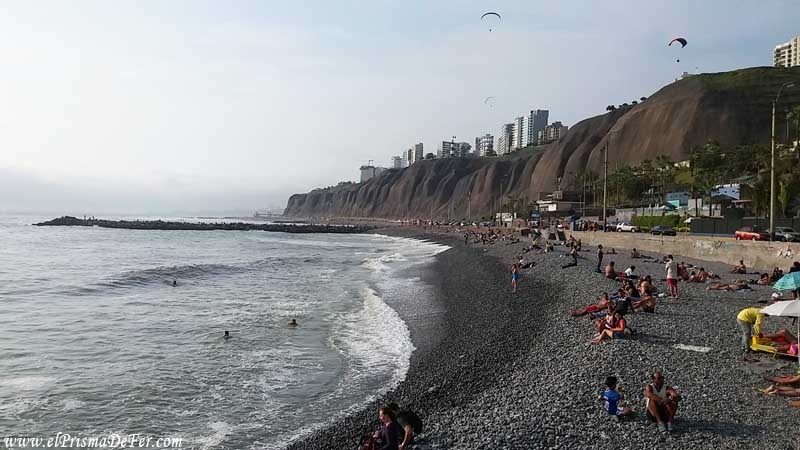
In addition, in this area you can see people paragliding, one of the most popular activities, as they take off directly from the cliffs to fly over the coast.
Visit Barranco, the bohemian neighborhood
Barranco is another of Lima's must-see districts, with a completely different vibe than the rest of the city. Its quiet streets are filled with urban art murals, cafes, bars, and colonial mansions that now serve as galleries.
One of its most famous landmarks is the Bridge of Sighs, which, in addition to its romantic charm, is often surrounded by street performers and musicians who add color to the promenade.
Mateo Salado Archaeological Complex
The Mateo Salado Archaeological Complex is one of Lima's most significant archaeological sites. Located just 15 minutes from Lima's Plaza Mayor, this site covers an area of 16.4 hectares and is composed of five stepped and truncated pyramids.
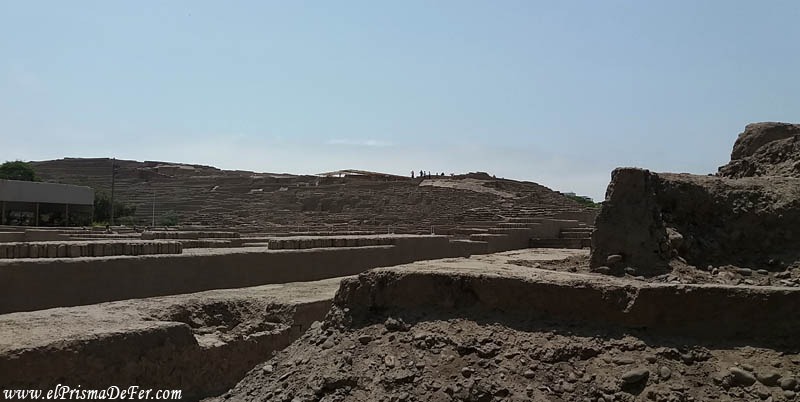
These structures date from approximately 1100 to 1450 AD and were built by the Ychsma culture, one of the most emblematic of pre-Hispanic Lima.
During the Inca occupation, which began around 1470 AD, the complex was reoccupied and expanded. Mateo Salado likely served as an administrative and ceremonial headquarters, with courtyards, passageways, and a main plaza where the population gathered for religious festivals and work.
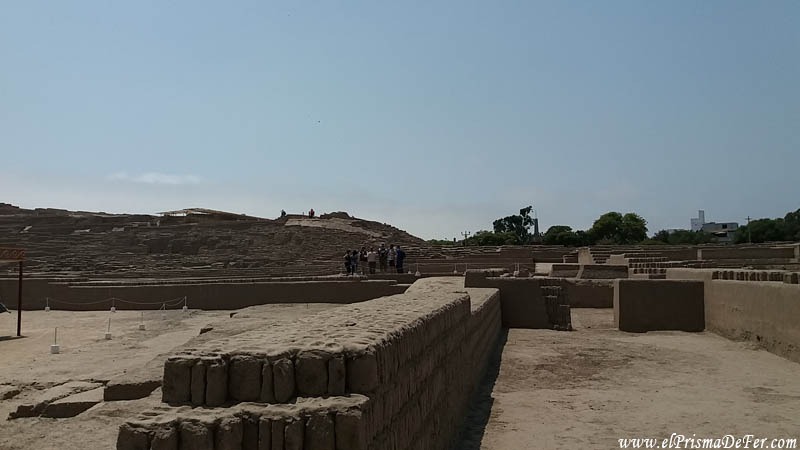
Museums to understand Peruvian history
Lima is home to some of the country's most important museums, ideal for those looking to delve deeper into Peruvian culture.
The Larco Museum is one of the most recommended, with an impressive collection of pre-Columbian pieces and a very well-kept museography. The colonial building and its gardens make the visit enjoyable beyond the exhibits.
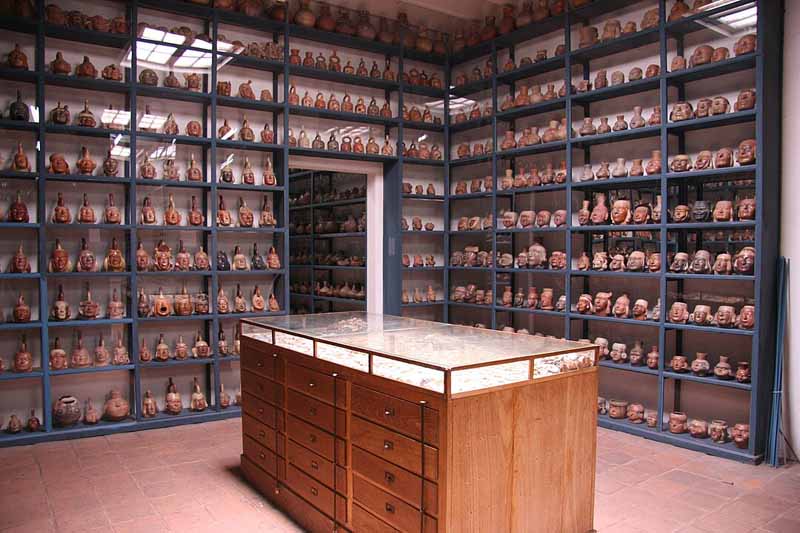
Another interesting space is the National Museum, which, although less visually attractive, offers a broad perspective on the different cultures that inhabited Peru.
Enjoy Peruvian cuisine
Although I haven't been enchanted by Lima in other ways, it's impossible not to recognize that it's the gastronomic capital of Peru and one of the most outstanding in the world.
From fine dining to small venues, there are options for every budget. Trying a good ceviche is a must, and doing so in the coastal city gives it a plus.
Even in local markets, like Surquillo, you can eat at affordable prices and with authentic flavor.

Getaways from Lima
Although Lima can take a couple of days to explore, many travelers use the capital as a jumping-off point to explore other parts of southern Peru. From desert oases to nature reserves by the sea, there are several interesting options for a getaway.
Caral, the oldest city in America
If history is your thing, a good option is to visit the Sacred City of Caral, located about 4 hours north of Lima.
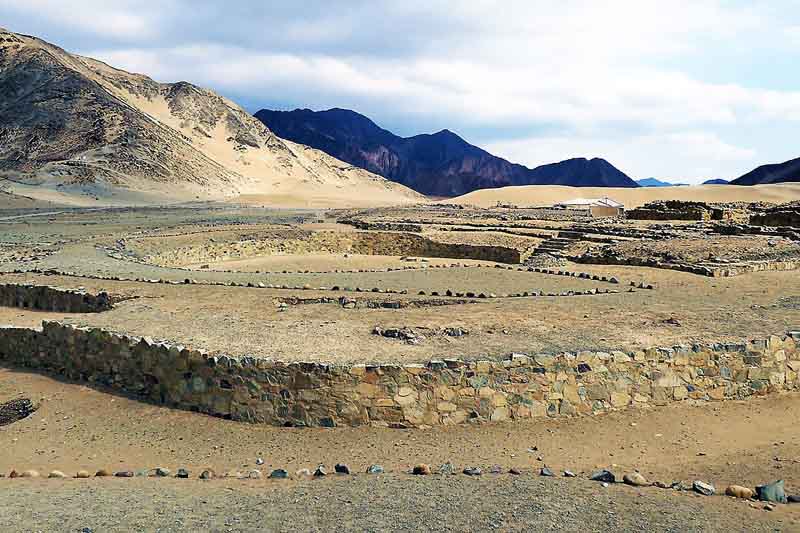
This archaeological site is considered the oldest civilization in America, with more than 5,000 years of history.
Caral is a less touristy getaway than Paracas or Huacachina, making it a very interesting alternative if you're looking for something different and with great cultural value.
How to visit the Sacred City of Caral from Lima
To visit the Sacred City of Caral, located about 200 km north of Lima, the most practical option is to do so on an organized tour that includes round-trip transportation and a guide, since access is not entirely easy by public transportation.
In any case, if you want to go on your own, from Lima you can take an interprovincial bus to Barranca (several companies leave from the Plaza Norte terminal), and from there take a taxi or colectivo to the archaeological site, which is about 25 km away.
The entire journey can take between 4 and 5 hours each way, so it is advisable to leave early.
Paracas and the National Reserve
About 3.5 hours by bus from Lima, Paracas is another popular getaway. The main attraction here is the Paracas National Reserve, a protected area with spectacular coastal landscapes, cliffs, and reddish-sand beaches that contrast with the turquoise sea.
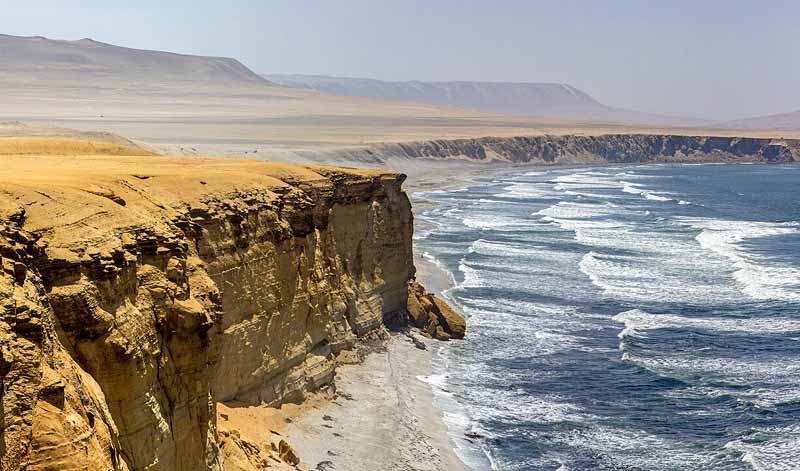
It is also the starting point for excursions to the Ballestas Islands, where you can see sea lions, penguins and a large number of birds.
It is a destination that can be visited for a day, although it is ideal to stay at least one night.
The Huacachina oasis
Huacachina is probably the most famous getaway from Lima.

It is located about 300 km south of the capital, in the Ica region, and getting there takes between 4 and 5 hours by bus.
Most bus companies, such as Cruz del Sur or PerúBus, depart daily from Lima and first arrive in the city of Ica. From there, it's just a 10-minute taxi or motorcycle taxi ride to the oasis.
To learn more about how to get to the Oasis from Lima and why I was a little disappointed, I recommend reading the post where I describe that experience in detail.
How to combine Paracas and Huacachina
If you're traveling from Lima and want to make the most of your time on the south coast, Paracas and Huacachina can easily be combined into a 2-day trip or even a quick 1.5-day getaway, depending on your priorities.
Day 1: Paracas and National Reserve
Leaving Lima early allows you to reach Paracas in about 3 to 3.5 hours by bus. Once there, the ideal thing to do is to visit the Paracas National Reserve. The afternoon can be spent strolling through the small town of Paracas and enjoying the coast.
Day 2: Huacachina
From Paracas, Huacachina is about 60 km away (approximately 1 hour by bus or taxi), so you can easily get there early in the morning. There, you can climb the dunes, go sandboarding, and take a buggy tour around the oasis.
After touring Huacachina, you can return directly to Lima by bus from Ica, which completes the getaway. Another alternative is to continue south, for example toward Arequipa, using Huacachina as a stopover.
Practical advice
- If you only have one day, it's best to choose one of the two destinations: Paracas for nature and marine life, Huacachina for desert landscapes and dune adventures.
- Book buses or transportation in advance, especially during peak season (December to March).

How to get from the airport to downtown Lima
Jorge Chávez International Airport is located in the Callao area, about 11 km from downtown Lima and about 17 km from Miraflores, the area most popular with tourists. Getting to the city isn't easy, so it's a good idea to plan your arrival carefully:
Bus oficial Airport Express
There is a bus service called Airport Express Lima that connects the airport with different points in Miraflores. It's cheaper (around 25 soles) and more comfortable, although less flexible than a taxi.
Taxi or transportation apps
The most convenient and safest option is to take an authorized taxi at the airport or use apps like Uber, Cabify, or DiDi. The trip to Miraflores usually costs between 50 and 70 soles and can take from 45 minutes to over an hour, depending on traffic.
Private transfers
Many accommodations offer private transfer services, which can be convenient if you arrive late at night or prefer to have everything arranged in advance.
Common public transport
It is not recommended for newly arrived tourists, as the airport is in a difficult area and the buses and minibuses lack clear routes or luggage space.
Where to stay in Lima
When choosing where to stay in Lima, the most recommended option for most tourists is undoubtedly Miraflores.
This neighborhood combines safety, good hotel options, and a prime oceanfront location. Walking along the Malecón, with its clifftop parks and Pacific views, is one of the city's best experiences, and staying here allows you to enjoy it at any time of day.
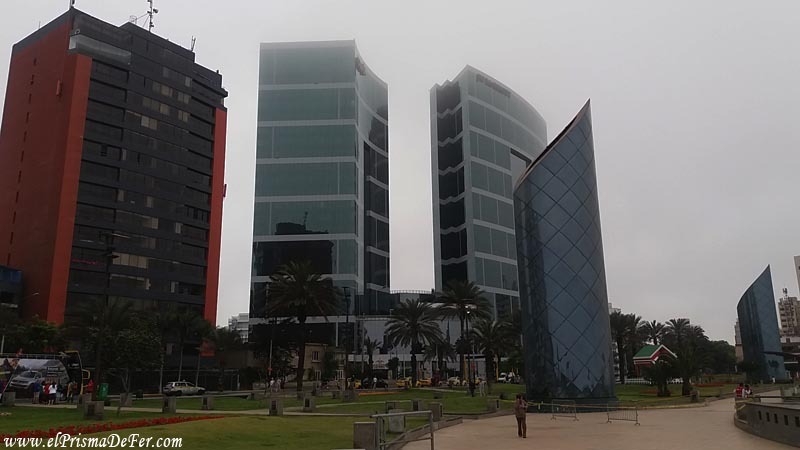
In Miraflores, you'll find everything from budget hostels to boutique hotels and international chains, as well as a large number of restaurants, bars, and cafes.
It's also the perfect base for getting around on foot, as many of the neighborhood's main attractions, such as Kennedy Park, the Larcomar shopping center, and the beaches, are close together.
Other areas that some travelers consider are Barranco, with a more bohemian and artistic atmosphere, and the Historic Center, ideal for those who want to be close to the Plaza Mayor and the colonial buildings. However, for a first-time visit, Miraflores remains the most convenient and safe option.
Security in Lima
Lima is a large city, and like many capital cities, it has safer areas and others where extra caution is warranted. In general, tourist neighborhoods like Miraflores, Barranco, and the Historic Center are fairly safe during the day, although it's always a good idea to be vigilant about your belongings and not display valuables.
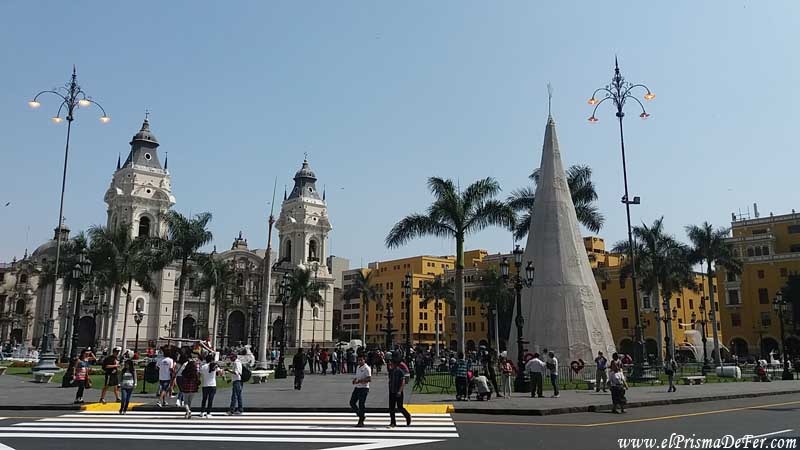
Outside of these areas, especially in peripheral or uncrowded neighborhoods, it is recommended to avoid walking alone, especially at night, and prefer private transportation or reliable mobility apps like Uber or Cabify.
Another tip is to not carry too much cash, carry only what is necessary, and always have photocopies of important documents. Although Lima is not an extremely dangerous city, it does require a certain amount of caution and common sense to avoid problems.
Best time to go to Lima
Lima's climate is quite unique. The city is characterized by gray skies most of the year due to the so-called "donkey belly," a layer of low clouds that covers the Peruvian coast and often gives the impression of a permanently overcast day.
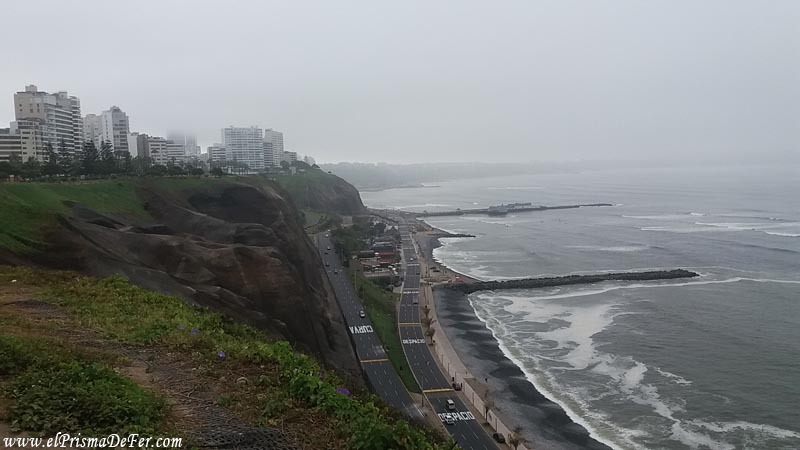
The best time to visit Lima is between December and April, when the sky is usually clearer, temperatures are warmer (between 25°C and 30°C), and it is more pleasant to explore the city, especially the neighborhoods near the sea such as Miraflores or Barranco.
The rest of the year, from May to November, the weather becomes cooler and wetter, with temperatures that rarely drop too low, but with that fog and gray sky that can affect the visit, especially if you are looking to enjoy the cliffs and the coast.
Even so, since Lima doesn't experience heavy rainfall, it can be visited at any time of year, although the city looks most attractive during the summer months.
My thoughts
My time in Lima left me with mixed feelings. The city, beyond its historic center and Miraflores with its sea cliffs, seemed chaotic, dirty, and with unsafe areas off the tourist trail.
While its cuisine is certainly delicious and the Barranco neighborhood also has a special charm, overall, it wasn't a capital city I enjoyed walking around, and the constant traffic and constant fog didn't help the experience much.
Support The Prism of Fer!
Your support helps me continue creating free content on the blog. Thank you so much!


